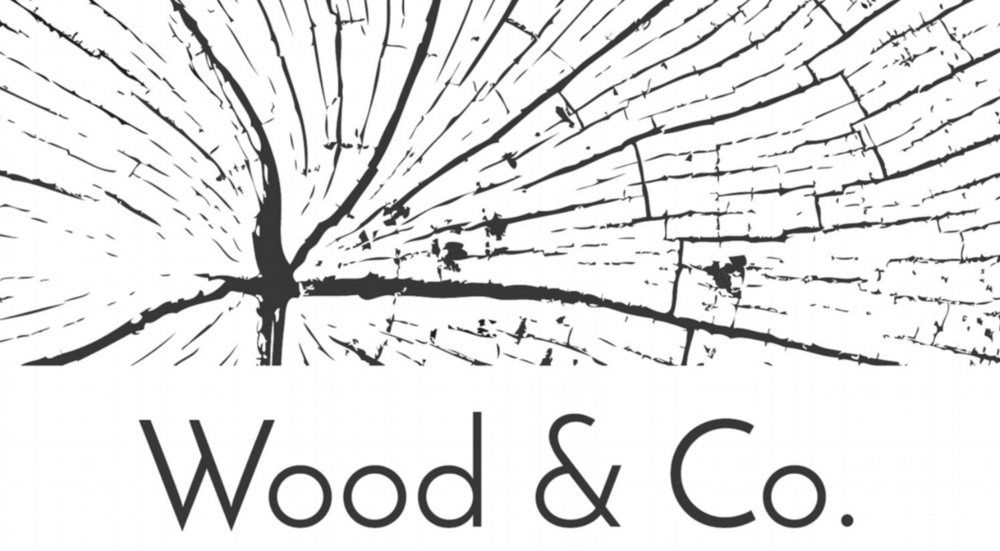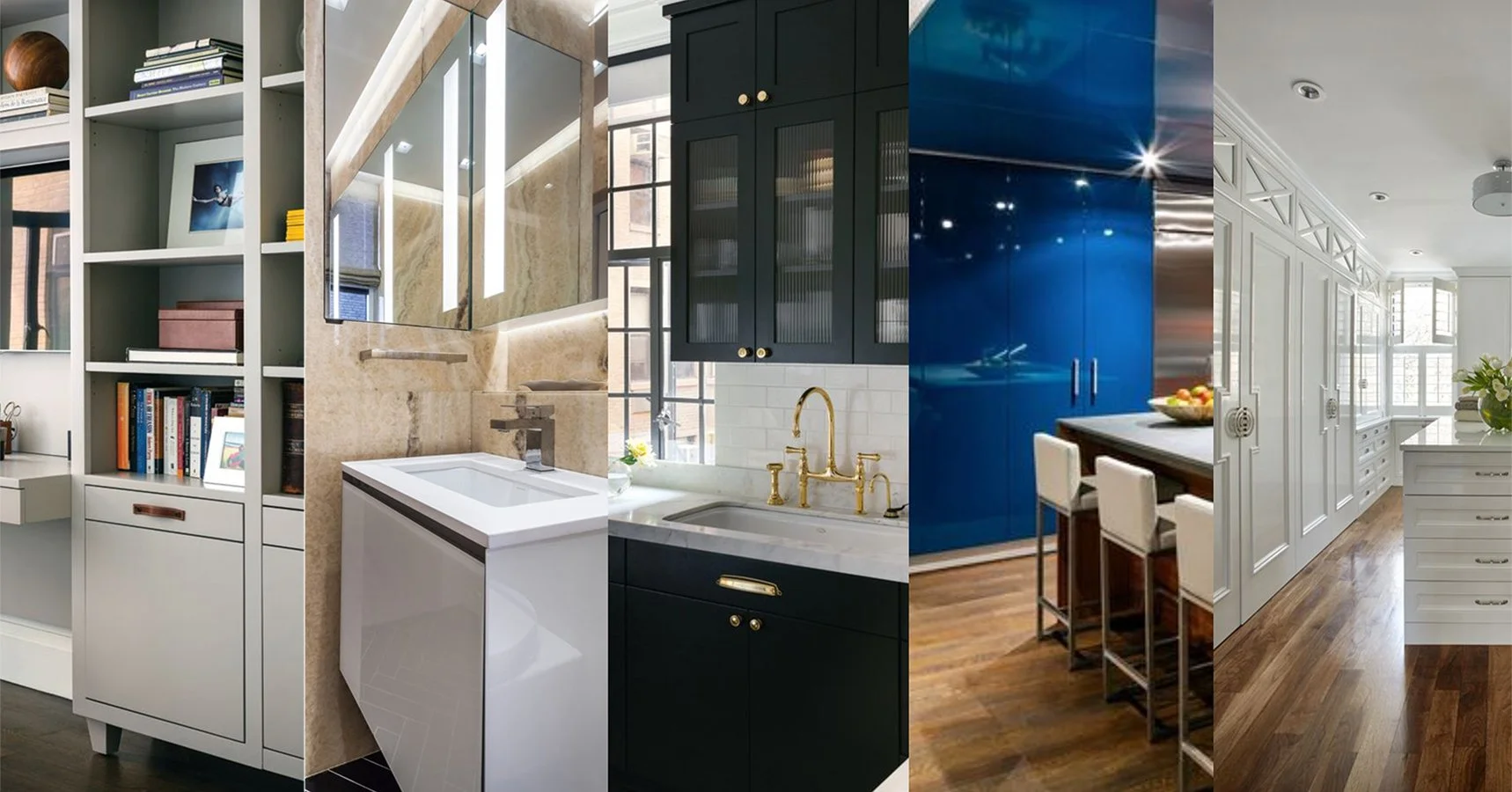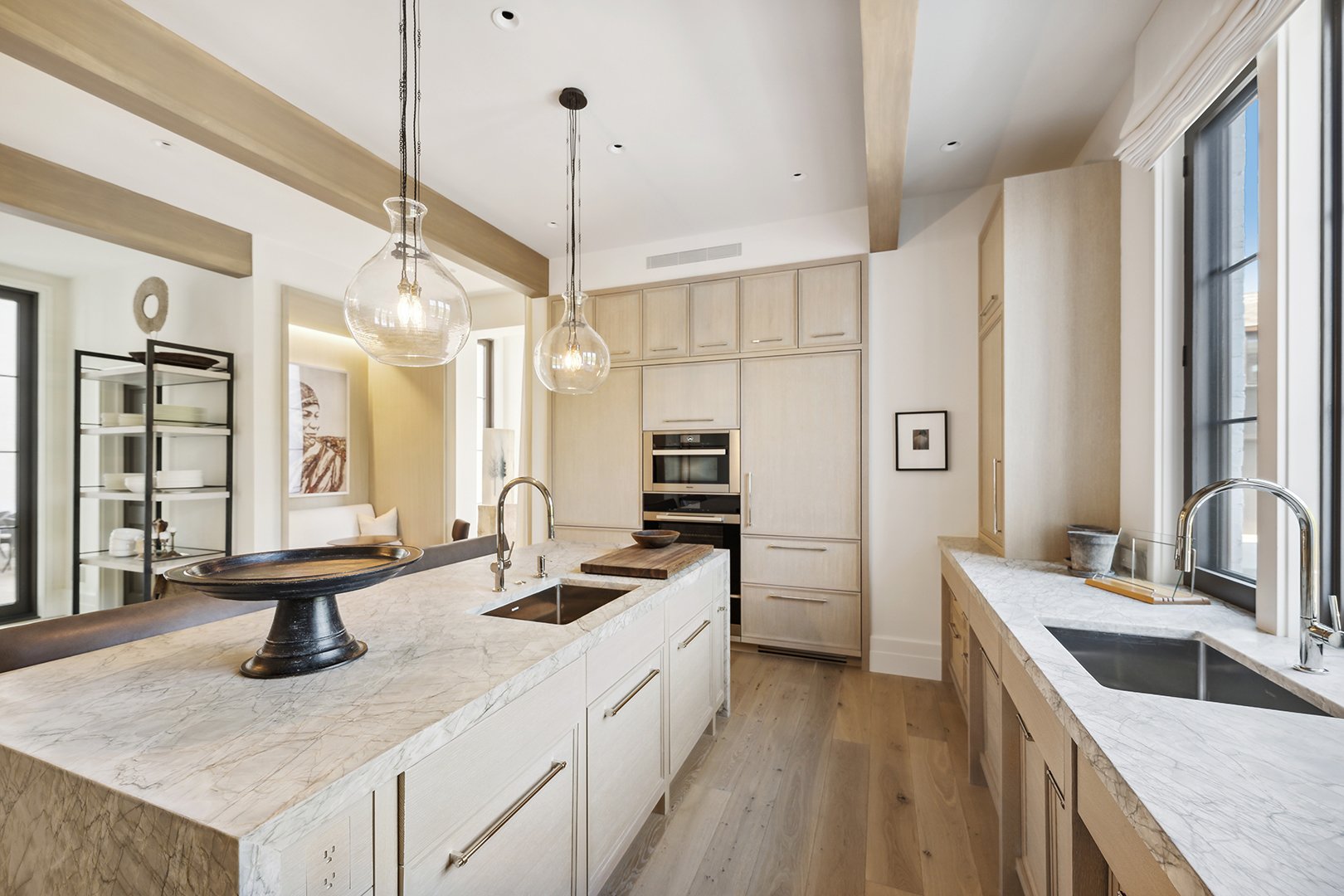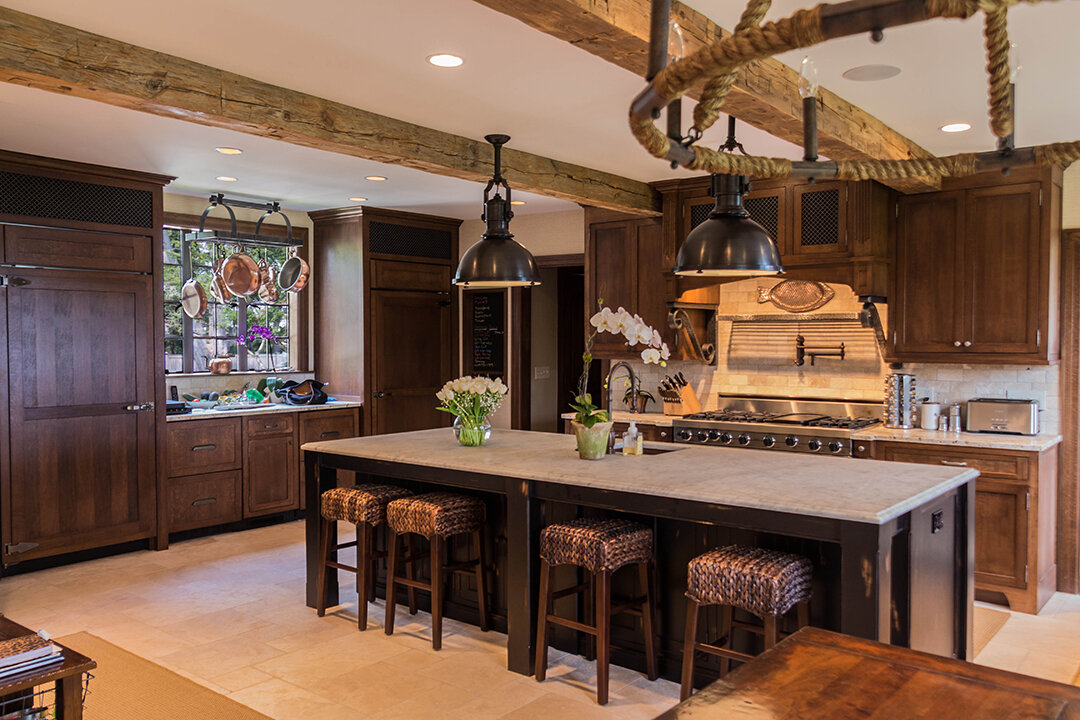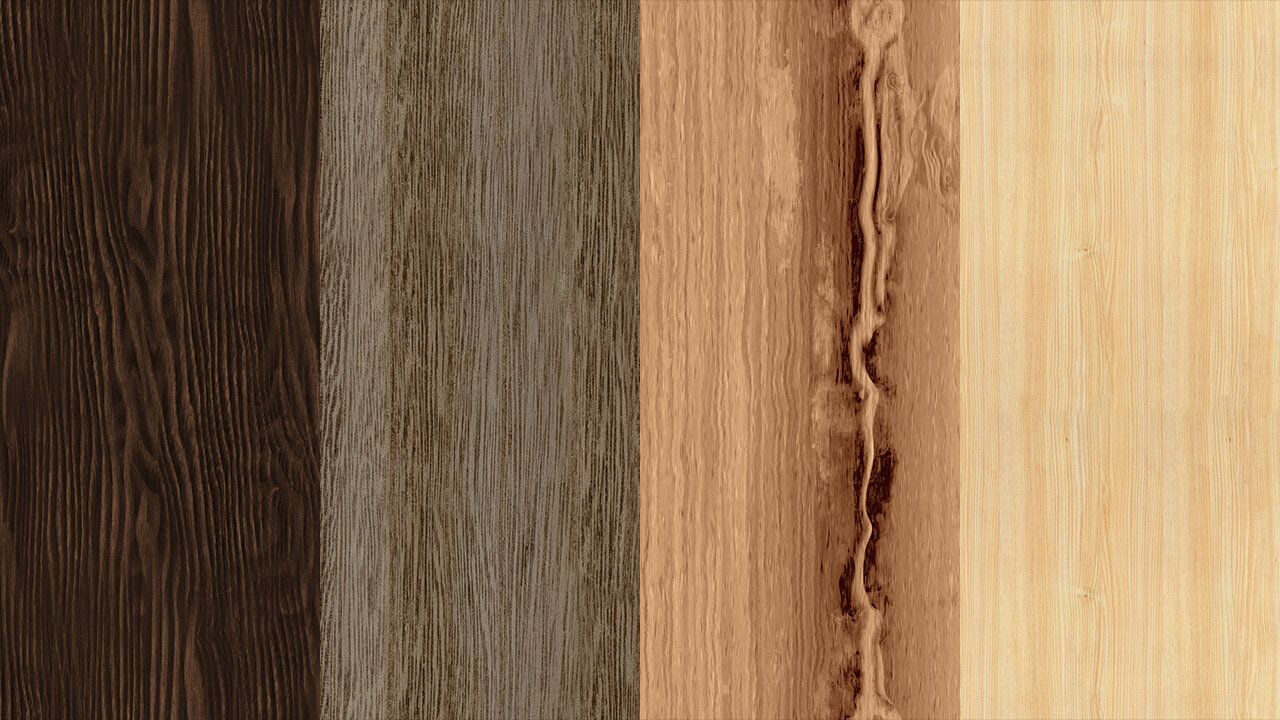Bright vibrant colors and sleek high gloss finishes. These are just some of the things we associate with lacquer finish cabinets, which makes them so highly desirable. Without a doubt, lacquer cabinets bring a touch of elegance and sophistication to any space in your home. They’re great for your kitchens, living rooms, walk-in closets, and any space in between! They also work well with just about any design style you can imagine as lacquer comes in a wide selection of colors and finishes.
As a company that’s worked on many lacquer cabinets over the years, we know first hand how popular this finish is. If you’re looking to elevate your home with new cabinetry, then you’ve come to the right place. Read on and discover all you need to know about lacquer finish cabinetry and whether it is the right choice for you!
What is a Lacquer Finish?
Lacquer is a solvent-based coating or finish applied to various surfaces, most commonly wood products like cabinets, furniture, and instruments. It is available both as a clear coating or as colored lacquer. It’s been in use since antiquity and continues to be popular to this day due to its intense and beautifully smooth finish.
Lacquer is often confused with other similar products like varnish and polyurethane, however, there are many differences. Lacquer finishes are applied via spraying, unlike other finishes that can be applied via brush, roller, or hand-rubbed with cloth. Polyurethane can either be water-based or solvent-based, whereas lacquer is only available as solvent-based. Unlike lacquer, varnish is always clear or transparent, while lacquer is available in opaque colors. Additionally, lacquer offers a thinner and smoother finish compared to the other two.
These are just some of the few differences, and each finishing material has its own pros and cons. Let’s explore the advantages and disadvantages of lacquer.
What are the Pros and Cons of Lacquer Finish?
Pros of a Lacquer Finish
Smooth Surface. Because lacquer is applied via spraying, it allows for a much smoother finish. This means you avoid unsightly brush strokes and uneven coats. It’s also this smoothness that allows your surfaces to have an extremely glossy finish.
Dries Quickly. A reason why some woodworkers prefer lacquer to other finishes is because of its quick drying times. It can take as quick as an hour to be dry to touch. Contrast this with something like an oil-based enamel which can take days to dry.
Versatility. Lacquer finishes offer a seemingly endless array of options. It’s available as a clear coat and as an opaque colored finish. It’s available in various glossiness from ultra matte to high-gloss, with satin and high-gloss being the most popular. This means lacquer can be used with any style from traditional to ultramodern.
Cons of a Lacquer Finish
Fumes. Like with most solvent-based finishes, lacquer is toxic when applied and while it’s curing. This means that a well-ventilated dedicated spraying area and proper personal protective equipment are needed when working with lacquer finishes. However, do note that this is not an issue once the finish has completely dried.
Not DIY-Friendly. Because of the factors mentioned above, lacquer finishing is a job best left to professionals. They will have all the necessary equipment and space to properly apply the finish safely. They also have expert knowledge on the different types of lacquer that suits your needs.
High Maintenance. While lacquer finishes are relatively durable, it does require a lot of upkeep. It needs to be refinished often to maintain its looks, especially for high gloss lacquer finishes. You also need to take care with chemicals such as acetone, ammonia, and other strong cleaners as these can ruin the finish.
Built-in Satin Lacquer Wall Panels with Open Shelving by Wood & Co.
How Do You Care For Lacquer Cabinets?
As mentioned just above, lacquer is a high maintenance finish. This is doubly true for high-traffic areas like your kitchen. However, it's still very much feasible to use lacquer finishes for such areas. We’ve done our fair share of lacquer kitchen cabinets, afterall! The key to making them last as long as possible is by keeping up with regular maintenance.
Regular Dusting. Small dust and dirt particles can create micro-scratches on your surfaces, which can ruin a glossy finish over time. Make sure to only use soft cloths like microfiber or chamois to avoid scratching the surface yourself.
Avoid Spills. Just like with any wood product, it’s best to avoid prolonged contact with water. Make sure to quickly wipe up any spills. This is especially important for liquids that can stain such as coffee, juices, oils, and grease. Again, make sure to use a soft cloth to avoid scratches.
Skip the Harsh Cleaners. When faced with a stubborn stain, we often default to harsh cleaners such as bleach, ammonia, and alcohol. Stop! These can eat away at your cabinet’s lacquer finish and expose the bare wood underneath. Instead, use a mild dish soap diluted in water.
Should I Use Lacquer for My Cabinets?
While lacquer finishes require more maintenance and may have a shorter lifespan compared to other finish types, there’s no denying their aesthetic appeal. Lacquer is a beautiful finish both for furniture and built-in cabinetry. It’s hard to resist the sleekness and elegance it brings to your space. The glossy appearance of lacquer finish cabinetry can become focal points in your kitchen, walk-in closet, dining room, or just about any space in your home.
If you’re prepared to put in the extra effort required by frequent cleaning and care, then you’ll be rewarded with a luxurious and stylish atmosphere for your home.
And if it’s lacquer you want in your home, whether it’s high-gloss lacquer kitchen cabinets or a satin lacquer walk-in closet, then get in touch with us! We at Wood & Co. have years of expertise built up creating bespoke cabinetry and handcrafted interiors. Schedule a consultation with us, and let’s work together to create your ideal living space.
